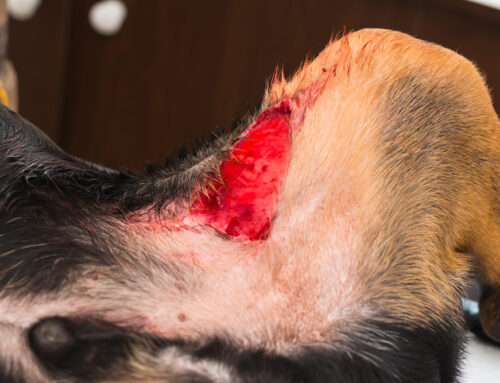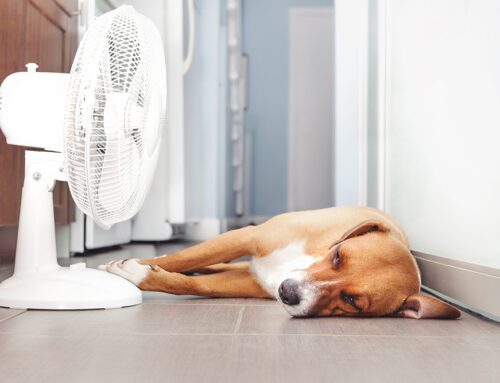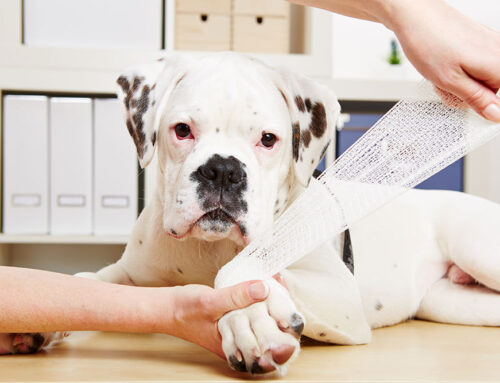Dogs and cats are social animals, and they see you as their family unit. Some pets learn to accept being left alone, but others develop separation anxiety, a disorder that manifests as panic-like behavior. This issue can be extremely disturbing for your pet, and can create household upheaval. Our team at Alpine Animal Hospital would like to provide do’s and don’ts for managing your pet’s separation anxiety, to help alleviate their distress.
DO recognize separation anxiety signs in your pet
Separation anxiety can be triggered by events such as schedule changes, an owner’s extended absence, or moving houses. Signs that indicate your pet may be suffering from separation anxiety include:
- Destructive behavior — When you leave home, and your pet becomes overwhelmed by stress, they may respond by tearing or biting any object in their reach. Dogs will also frequently scratch at doors and windows, in an effort to escape and reunite with their owner.
- Excessive vocalization — Dogs affected by separation anxiety may bark, howl, or whine persistently, and cats may meow or yowl. These vocalizations are meant to let everyone in the vicinity know about their distress, in hopes that someone fixes the problem.
- Inappropriate elimination — Dogs overcome by stress may lose bladder or bowel control, and any stressor can result in cats eliminating outside their litter box. If this behavior happens while you are at home, separation anxiety is likely not the cause.
DON’T assume your pet has a behavioral issue
If your pet’s behavior suddenly changes, do not assume they have a behavioral problem. Any pet who exhibits behavioral changes should be evaluated by a veterinary professional, to rule out a medical problem. Our veterinary professionals at Alpine Animal Hospital will want a detailed history about your pet’s environmental changes, when the behavior started, and exactly the behaviors you have witnessed.
DO teach your pet how to enjoy their own company
Gradually accustom your pet to being on their own. Designate a small room or area as your pet’s “safe zone,” with a comfortable place to rest, your recently worn clothing, and your pet’s favorite toys. Give your pet a food puzzle toy and walk away, leaving the room for a short period. You can gradually increase the time you spend away from your pet, until they are comfortable being alone.
DON’T be a drama queen for your pet
When you leave or return home, remain calm and low-key. Big emotional displays only feed your pet’s anxiety. Offer your pet a food-puzzle toy a few minutes before leaving, and quietly make your exit while they are solving the riddle. When you come home, wait until your pet calms down before greeting them, so you do not encourage their dramatic response.
DO desensitize your pet
Your pet is smart, and they may start feeling anxiety when you perform activities that signal you are about to leave. They understand that when you put on your shoes and your jacket, and grab your keys, you are about to leave them alone. You can desensitize them to these actions by performing them several times a day, but not leaving, until these cues no longer make your pet anxious.
Then, graduate to desensitizing them to your leaving, starting by simply opening the door, walking outside, and immediately coming back inside. If they seem unaffected, you can go outside, close the door, and come back inside after a few minutes. Gradually increase the time you stay gone until they seem relaxed in your absence.
DON’T scold your pet
Separation anxiety is akin to humans having a panic attack. Your pet is not misbehaving or acting spitefully. They are genuinely, extremely upset and stressed. Scolding or punishing your pet when they exhibit separation anxiety signs will only make the situation worse by causing them additional stress.
DO find ways to make your pet’s day more interesting

Once your pet accepts your absence without being overly stressed, they may still be bored staying at home by themselves all day. Find ways to keep them stimulated during the day.
- Exercise — Before you leave, give your pet a vigorous workout, to ensure they are tired and ready for a nap.
- Playdate — Have a friend or pet sitter come over once or twice during the day to play with, and give your pet some love and attention.
- Doggy daycare — You can drop your dog off at doggy daycare a few times a week, to let them enjoy doggy friends.
- Music — Leave music playing to help soothe your pet. Studies have shown that dogs rest and sleep more when exposed to classical music played at low volume.
- Outside view — Place a comfortable window perch where your pet can watch wildlife cavort outside.
If your pet suffers from severe separation anxiety, they may not respond to these techniques, and will need help from a behavioral pet therapist. You can also ask our veterinary professionals if anti-anxiety medications would be appropriate for your pet, but never give your pet any medication before consulting a veterinarian.
If you would like to discuss your pet’s anxiety issues, do not hesitate to contact our team at Alpine Animal Hospital, to schedule an appointment and hear our solutions.







Leave A Comment